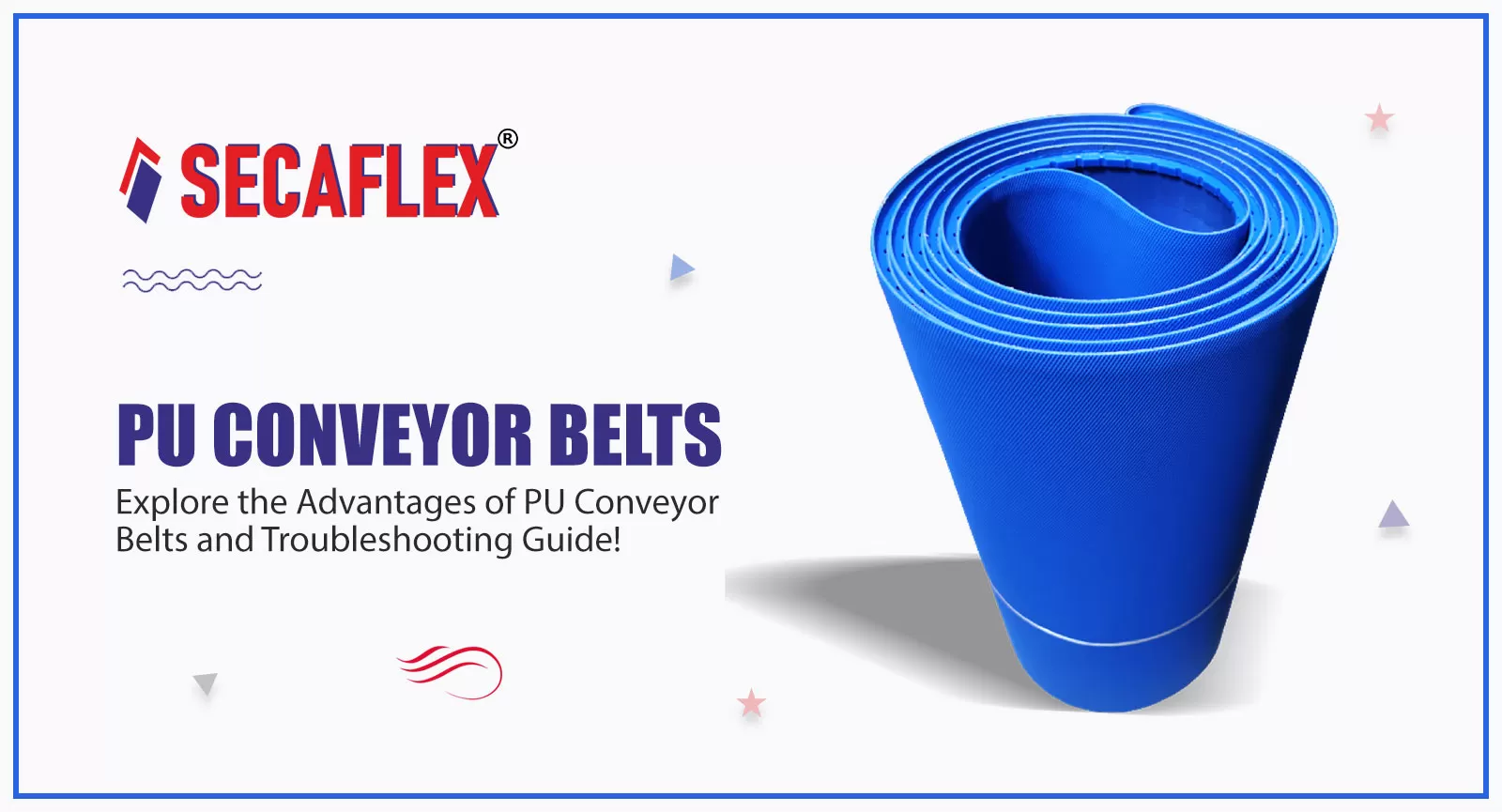- + 91-9167662789
- care@dktee.com
Explore the Advantages of PU Conveyor Belts and Troubleshooting Guide!

November 21, 2023
Conveyor belts serve a crucial role in guaranteeing effective and flawless operations in the realm of material handling and industrial processes. PU conveyor belts have gained importance among the numerous types of conveyor belts accessible due to their excellent features. In this blog, you will learn about the advantages of using Polyurethane conveyor belts and find their troubleshooting guide.
Advantages of using PU (polyurethane) material in PU conveyor belts
Polyurethane (PU) conveyor belts are constructed from a synthetic material that combines the greatest properties of plastic and rubber. Because of their durability, flexibility, and abrasion resistance, these belts are frequently utilized in sectors such as manufacturing, packaging, food processing, and logistics. They are gaining popularity due to their various uses and advantages. Some of the benefits of using PU material in conveyor belts are:
Durability: Top PU conveyor belt suppliers in India use superior-grade polyurethane to build these belts, which makes them resilient to wear and tear. They can endure heavy weights and sharp objects, making them ideal for use in harsh industrial applications. Because of the high stress and impact resistance incorporated into them, they will survive longer between replacements.
Flexibility: Polyurethane conveyor belts may be molded to meet the specific shapes of each conveyor due to its malleability. This stops the belt from becoming broken and keeps everything flowing smoothly. The PU Conveyor Belt is also well-suited for curved conveyor systems, where rigid belts would be less effective, due to its versatility.
Resilience to Chemicals: Polyurethane (PU) conveyor belts can cause a lot of harm from things like oils, solvents, and acids. As a result, they are ideal for use in the chemical processing and handling industries, where the handling and processing of hazardous chemicals poses a risk to personnel.
Low Noise: Polyurethane (PU) Conveyor Belts are quieter than metal and rubber conveyor belts. This is particularly important in businesses where excessive noise is an issue, such as the food and pharmaceutical industries, where silence is critical for worker safety and hygienic conditions.
Energy Efficient: Polyurethane (PU) conveyor belts require less energy than other types of conveyor belts. They are less expensive to operate since they are lighter and smoother. This is because the motor and other sections of the conveyor system are not subjected to less strain when fewer things need to be transported.
Cost-effective: Because they endure a long time and require little maintenance, PU conveyor belts save money in the long run. They are designed to last longer than normal conveyor belts, lowering maintenance expenses. Their endurance also implies that they can be maintained with minimum effort, saving money on the conveyor system’s regular maintenance.
Eco-friendly: Because of their eco-friendliness and recyclability, Polyurethane conveyor belts have a minimal environmental imprint. As a result, they are a desired solution for enterprises that want to reduce their carbon footprint. The waste generated by the conveyor system may be reduced by adopting Polyurethane conveyor belts, reducing the system’s total environmental impact.
Guide to Troubleshooting Common Issues with PU Conveyor Belts
Problem: Belt misalignment leading to tracking problems.
Solution: Regularly inspect and adjust the conveyor belt tracking. Ensure proper tensioning, and align rollers and idlers.
Problem: Abrasion causes premature wear and tear.
Solution: Use proper belt cleaners, maintain optimal tension, and choose the right type of PU compound for the specific application.
Problem: Slippage of the conveyor belt on the drive pulley.
Solution: Adjust the tension, check for pulley misalignment, and ensure proper drive pulley lagging.
Problem: Material falling off the sides of the conveyor belt.
Solution: Adjust loading conditions, install effective skirting, and regularly inspect and replace damaged sealing components.
Problem: Uneven wear along the length of the conveyor belt.
Solution: Ensure proper alignment, regularly clean the belt and use compatible cleaning agents to prevent material buildup.
Here are Some Preventive Measures For PU Conveyor Belts
- Conduct routine inspections, clean the conveyor system, and promptly address any signs of wear or damage.
- Ensure correct installation of the conveyor belt, align rollers and idlers accurately, and use the recommended fasteners and splicing techniques.
- Maintain the appropriate tension in the conveyor belt to prevent slipping, reduce wear, and ensure efficient material handling.
- Choose the right PU compound based on the specific application and conveyed materials to enhance durability and performance.
Conclusion
PU conveyor belts provide an excellent balance of durability, flexibility, and resistance to a variety of environmental variables. Industries can maximize the effectiveness and lifespan of their conveyor systems by recognizing their benefits and applying efficient troubleshooting and preventative procedures.
With a focus on customization and reliable supply, DKT Engineering Enterprises has become a trusted partner for industries seeking top-tier conveyor belt solutions. As one of the best PU conveyor belt manufacturers in India, we are committed to quality, innovation, and customer satisfaction.
About Author
DKT Engineering Enterprises
DKT Engineering Enterprises has vast experience in manufacturing conveyor belts in India. We are providing high quality products to our clients Since 2010.

